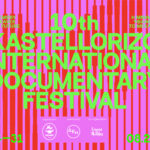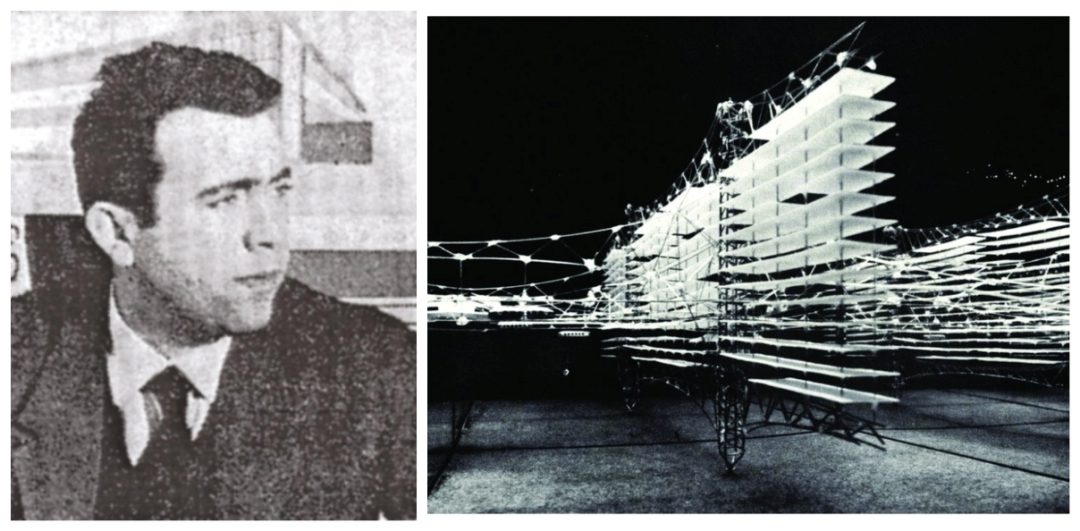
A supporter of radical modernism, Takis Ch. Zenetos is recognized as one of the leading figures of 20th century Greek architecture. An indefatigable researcher with an excellent knowledge of technology and an internationally renowned designer, Zenetos has designed visionary projects that meet the requirements of a world much more advanced than the Greece of the 1970s. Takis Zenetos was born in Athens in 1926. In 1945 he left to study at the École des Beaux-Arts in Paris, taking courses in the architecture studio of Otello Zavaroni. His life in post-war Paris, a city animated by avant-garde artistic and cultural currents, had a great impact on his work.
In 1952 he finished his studies at the École, and in 1953 he presented his diploma thesis on “Micropolis – Autonomous residential unit”. He returned to Greece in 1955 and opened an architecture office in collaboration with Margaritis Apostolidis. The first years of his professional activity were particularly fruitful. His works were published in many European architectural magazines and Zenetos completed a total of 120 projects, among which is the spatial planning of the Attica Basin, many industrial buildings as well as important apartment buildings and private residencies.
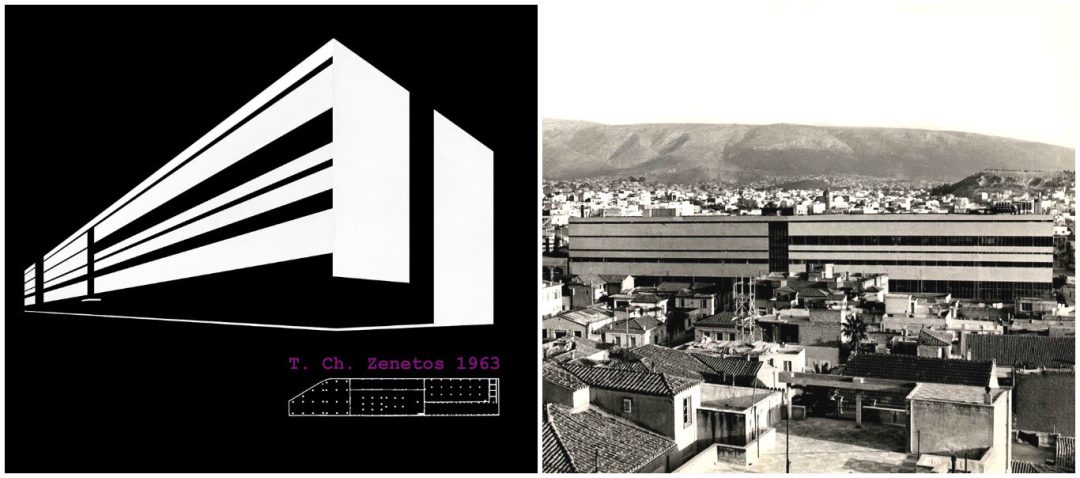
His works include the renovation of the Fix Factory at Syggrou Avenue (now the seat of Greece’s National Contemporary Art Museum, EMST), the residence in Glyfada, 21 Xanthou Street (1961), the apartment building on 17 Herodus Atticus Street (1959), the School of Agios Dimitrios (known as Stroghylo, 1972), the residence in Kavouri (1959) and the Lycabettus Theater (1964), all found in Athens and its surroundings. Zenetos also made architectural plans in other regions of Greece, notably for the Kyknos tomato factory in the Peloponnese (Savalia, 1963), and his unrealized projects for the Liakota hotel in Plakias (Crete). Zenetos’ buildings reveal an environmentally friendly architecture that highlights the use of the most advanced technologies of his time.
His small works, private villas built in Attica, showcase the more personal elements of his architecture. In an age dominated by massive construction, Zenetos argued that the human dwelling should be the highest product of modern civilization and considered it necessary to remove the box cube of the modern house and integrate it into the environment. The work of Takis Zenetos was highly appreciated by a small circle of young architects, many of whom he significantly influenced. Among his great works of a theoretical type, we must retain his concept and research on “Electronic Urbanism” and its his urban plans for new settlements in coastal Greece.
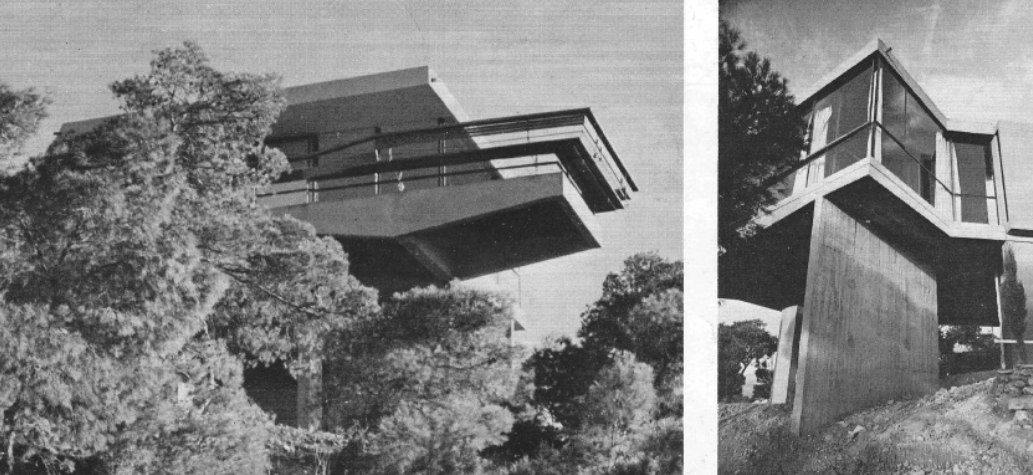
Zenetos had envisioned the evolution of the city, not only in Greece but also in the entire West. He had foreseen the technological developments that would affect human life and activities, and in the following years he would try to formulate his own view of its ideal form and build buildings that would serve it. The quintessence of Takis Zenetos’ urban planning and spatial planning philosophy is contained in his research, as formulated in his proposal for “Electronic Urbanism” (1952), i.e. in the integration of the most recent conquests of electronic science and technology into the daily life of man.
The basic idea of Electronic Urbanism [which Zenetos designed, developed and investigated from 1952 to 1974] is the creation of a system with diverse levels and locations for different urban functions, primarily residential, suspended from natural environments [as cantilevers or mountains] and integrated with all sorts of communications technologies, that allow wide-ranging connections among people and social groups. The extensive use of tele-work, tele-management, tele-medicine and tele-education redefines this new human environment, geared towards free communication and creative occupation.

As Marianna Charitonidou explains in her article for journal ‘urban science’, Takis Zenetos’s “Electronic Urbanism” was based on the development of electronic applications in the realms of what was called “tele-management,” “tele-work” and “tele-services.” Zenetos started developing his ideas regarding autonomous living units designed for “Electronic Urbanism” in 1952, when he was still a student at the École de Beaux Arts in Paris. He presented aspects of the project —from large models including several buildings to prototypes of furniture— on several occasions, such as the Exhibition of the Modern Housing Organization in Athens in 1962, and at the first Construction Exhibition at the Zappeion in 1971.
Zenetos was convinced that “Electronic Urbanism” would help citizens save the time that they normally used to commute to work, and would allow them to spend this time on more creative activities, at or near their homes. He prophesied in a sense the idea of working from home, and believed that both architecture and urban planning should be reshaped in order to respond to this new concept. He supported the design of special public spaces in residential units, aiming to accommodate the inhabitants during working hours.
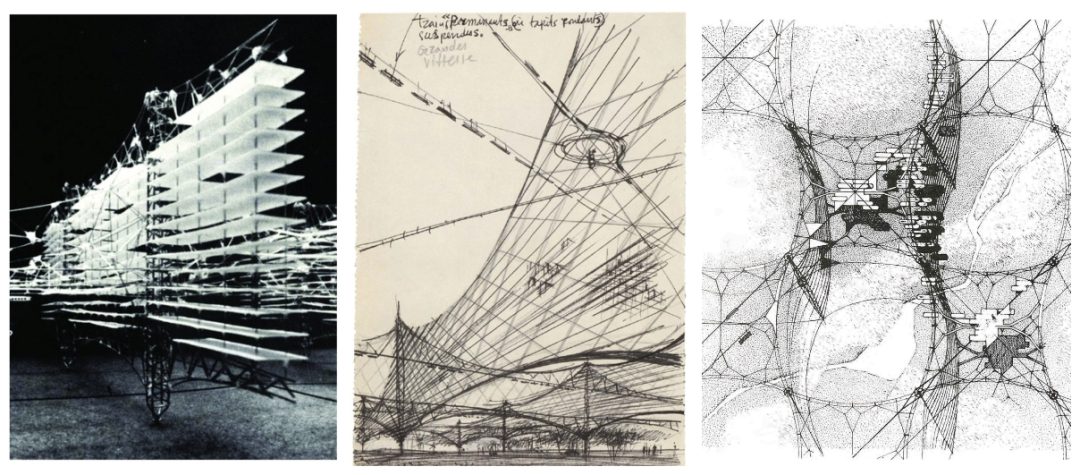
The co-existence of different parts of this urban grid with a road network that is temporarily suspended in the air corresponds to the period of the automobile boom. The grid acts as an envelope to the city, working in three phases; in the last phase we can see the complete reunification and recovery of natural areas, while all functions are placed upon a system of cables suspended in the air, something that reminds us of the Spatial City by Yona Friedman. Even if Zenetos didn’t have the opportunity to know if the ideas behind Electronic Urbanism would have worked or not, his approach to technologies focused on telecommunications, was really innovative for the time.
“Electronic Urbanism” not only constitutes an artistic contribution to experimental architecture, but is also characterized by a new social vision, promising to resynchronize practices of daily life. Placing an early emphasis on electronic technology, Zenetos is perhaps a unique case of an early representative of the digital generation of architects. Takis Ch. Zenetos died by suicide on June 29, 1977. After the recent interventions in two of his most important works in Athens (Fix Factory /EMST and Lycabettus Theatre) the importance of his contribution to modern Greek architecture comes to the fore again, inviting new interpretations.
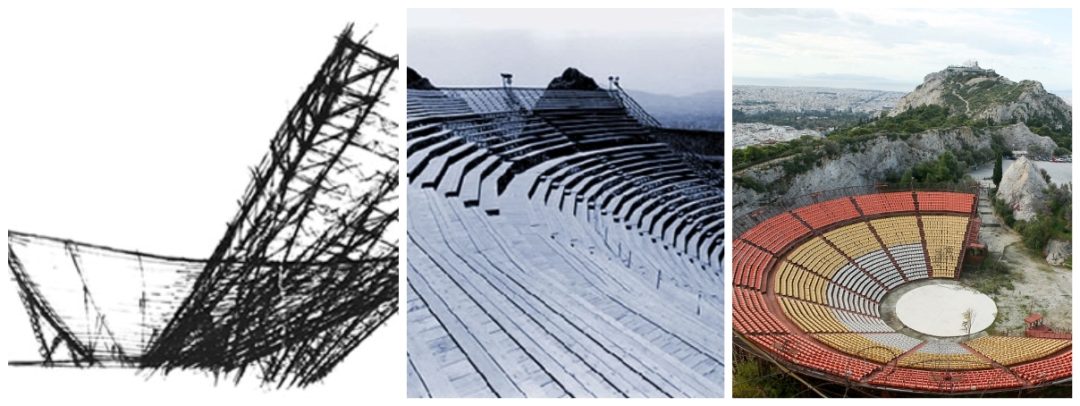
Read more via Greek News Agenda:
Constantinos Doxiadis: The Greek visionary who built cities for the world
Tomorrows – Urban fictions for possible futures
I.L.
TAGS: ARCHITECTURE | ATHENS | GLOBAL GREEKS | MODERNISM









